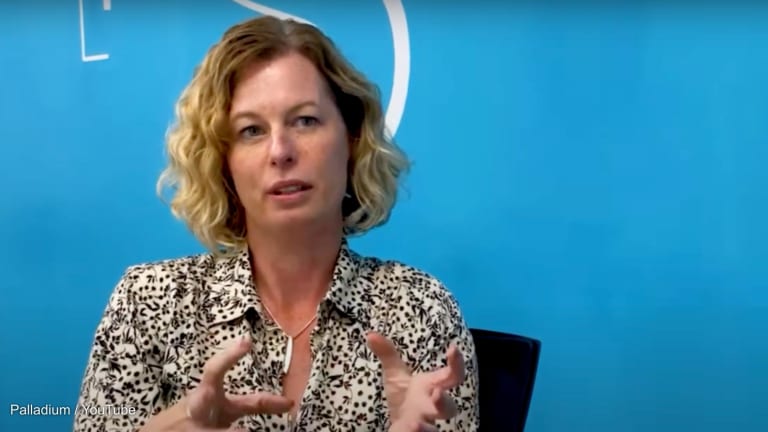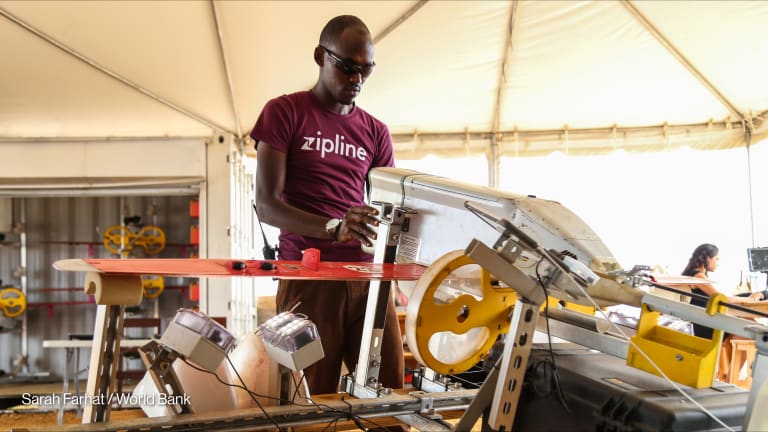So you want to switch from DFID grants to contracts
The processes for procuring DFID grants and contracts aren't so different; here are some tips for making the switch.
Commercial contracting isn’t anything new, but in the past decade, donors such as the U.K. Department for International Development, the European Commission, the U.S. Agency for International Development and others have steadily increased the pool of funds available through contracts, and this shift hasn’t gone unnoticed by those delivery partners — typically nonprofits — dependent on traditional grants. Sometimes offering larger budgets and longer program cycles, commercial contracts are traditionally offered to for-profit suppliers, firms such as Adam Smith International and PwC, for example, but that tide is shifting also. Haniya Dar-Tobin, a commercial contracts consultant at Hamilton Verney specializes in guiding international nongovernmental organizations as they break into the contract space. Speaking to Devex after a panel discussion at the 2017 Bond Annual Conference in London, Dar-Tobin said NGOs are increasingly making the switch. She said while the prospect, not to mention competition, “may seem scary” at first, the processes for bidding are largely the same for both instruments, and contracts could offer a great incentive to “tighten up” an organization’s internal methods of working. “[Contracts] provide a degree of flexibility in terms of the approach that’s taken to meet the delivery requirements by DFID, and they also allow a degree of control over the budget,” Dar-Tobin told participants gathered at the 2017 Bond Annual Conference. “I’ve also seen those organizations who have gone for contracting really drive improvements within their organization, in terms of how they can manage large, complex projects,” she said. Risks and rewards Commercial contracts are typically structured on a larger scale compared with grants, she explained, involving multiple partners or consortia of partners and subcontractors. Contracts with DFID can also incorporate elements of payment by results, whereby DFID pays delivery partners only when the program is completed and results are demonstrated. While this can be jarring at first, Dar-Tobin said that for clients making the switch, contracts have “improved their internal systems, they’ve become more efficient, and they’ve certainly strengthened their monitoring and evaluation capacity, given that link with payment by results.” Gary Forster, chief executive of Transaid and a board member of the Charity Finance Group and RESULTS UK, agrees. He pointed out that grants aren’t immune to donors’ push for payment by results. “Grants are becoming increasingly tight, look at the documentation, they’re getting longer and longer, deliverables are more specific,” he told Devex. “I see grants and contracts as being not that different,” he told Bond conference participants gathered for a session called “Beyond Grants.” Forster speculated that the role of traditional grants is likely to diminish going forward, in favor of contracts. Forster said Transaid came around to the idea of switching to contracts when it was subjected to an audit as a subgrantee to John Snow International on a USAID contract. As his team became more familiar with USAID’s regulations over the course of the audit, Transaid’s comfort level with contracting procedures grew. Other than the value-added tax implications of receiving a grant versus a contract, Forster agreed the instruments are not dramatically different. Still, because of the more strict payment arrangements, he acknowledged that contracts challenged his team’s monitoring and evaluation practices, its ability to communicate effectively with the Transaid board, and forced them to “tighten up” due diligence with both current and prospective delivery partners. Today, 70 percent of Transaid’s $2 million revenue is restricted funding, split down the middle between grants and contracts. “Some of our grants and contracts even allow for a 5 percent surplus to reinvest in the organization,” he said. Tips for making the switch Both Dar-Tobin and Forster agreed an organization must be ready to push itself if it wants to begin bidding for contracts. By comparison, Dar-Tobin said some of the larger commercial suppliers regularly set extremely ambitious — and expensive — targets for winning contracts. “There’s the risk of losing,” she said. “A top private consultancy said to me that their aim is to win 1 in every 4 bids that they put in.” At $40,000 to $60,000 per bid, she estimates that, on average, an NGO could lose about $150,000 before winning one contract. “I would hope INGOs are a bit more savvy about selecting which bids to go for, given the cost involved,” she said, pointing out that the estimate doesn’t include “the internal work that you need to do, to make sure your systems and processes are really top notch to allow you to do commercial contracting.” First and foremost, Dar-Tobin said organizations hoping to bid for contracts must get familiar with DFID’s many regulations, in order to weigh the risk burden typically passed to recipients. To get started, she suggests bidding as a subcontractor with another NGO to get a feel for the process, or perhaps partnering with a U.S. commercial supplier hoping to break into the DFID market. The U.S. supplier will value the U.K. NGO’s relationship with DFID, and the supplier can help initiate the NGO into the complexities of contracting. “As a subcontractor, the most important thing is to think about negotiating with your prime and trying to reduce some of the risks around payment by results and pre-financing with your lead organization,” she said. “DFID tend to pass down considerable risk to the lead organization,” she added, emphasizing the premium DFID places on due diligence, and the importance of “knowing your supply chain really well, your partners and your partners’ partners.” For Forster, improving internal overhead recovery systems is key to insulating the organization against the potentially bumpy induction into contracting. “We are passionate that we don’t use our unrestricted funds to subsidize contracts or grants, because of that we’ve had to develop pretty water-tight overhead recovery processes,” he said, adding that overhead recovery is “the most important thing to get right in your organization.” Particularly if organizations hope to re-invest funds, improving overhead recovery could mean the difference between thriving, and just getting by in the first contracts. And he advised organizations not to be shy about pushing the donor for a surplus. “I think we have to have those conversations with our funders; our private sector competitors — the likes of Crown Agents, Oxford Policy Management, Adam Smith, PwC — they’re all having those discussions about getting some surplus as well,” he said. Forster said other aspects of Transaid were also transformed by the switch to grants. “We have had to go through a journey, we have had to professionalize more, there’s not the same financial flexibility within a program, we’ve had to tighten M&E, reporting, delivery got sharper,” he said. Forster told Devex that these improvements did not exist in a vacuum; the whole organization benefitted from the shift to contracts, including active grants. “We’ve improved the way we deliver grants as well, and today we don’t treat them particularly differently,” he said. Forster also advised organizations to learn to “assess opportunities very quickly,” through an executive “go-no-go” process, “where the executive team sits down and looks at the risk, cost, strategic value of what we’re doing, as well as partners we might be able to work with.” Finally, Forster said, organizations hoping to bid for contracts should look for templates and examples of process documents, for example the overhead recovery checklist provided by the Charity Finance Group. “We’ve had to evolve, we’ve got things wrong over the last five years, something as simple as our overhead recovery calculation sheet, which we fill in before we bid on a contract, has changed, I think now we’re on version 27.” For more U.K. news, views and analysis visit the Future of DFID series page, follow @devex on Twitter and tweet using the hashtag #FutureofDFID.
Commercial contracting isn’t anything new, but in the past decade, donors such as the U.K. Department for International Development, the European Commission, the U.S. Agency for International Development and others have steadily increased the pool of funds available through contracts, and this shift hasn’t gone unnoticed by those delivery partners — typically nonprofits — dependent on traditional grants.
Sometimes offering larger budgets and longer program cycles, commercial contracts are traditionally offered to for-profit suppliers, firms such as Adam Smith International and PwC, for example, but that tide is shifting also.
Haniya Dar-Tobin, a commercial contracts consultant at Hamilton Verney specializes in guiding international nongovernmental organizations as they break into the contract space. Speaking to Devex after a panel discussion at the 2017 Bond Annual Conference in London, Dar-Tobin said NGOs are increasingly making the switch. She said while the prospect, not to mention competition, “may seem scary” at first, the processes for bidding are largely the same for both instruments, and contracts could offer a great incentive to “tighten up” an organization’s internal methods of working.
This story is forDevex Promembers
Unlock this story now with a 15-day free trial of Devex Pro.
With a Devex Pro subscription you'll get access to deeper analysis and exclusive insights from our reporters and analysts.
Start my free trialRequest a group subscription Printing articles to share with others is a breach of our terms and conditions and copyright policy. Please use the sharing options on the left side of the article. Devex Pro members may share up to 10 articles per month using the Pro share tool ( ).
Molly Anders is a former U.K. correspondent for Devex. Based in London, she reports on development finance trends with a focus on British and European institutions. She is especially interested in evidence-based development and women’s economic empowerment, as well as innovative financing for the protection of migrants and refugees. Molly is a former Fulbright Scholar and studied Arabic in Syria, Jordan, Egypt and Morocco.








